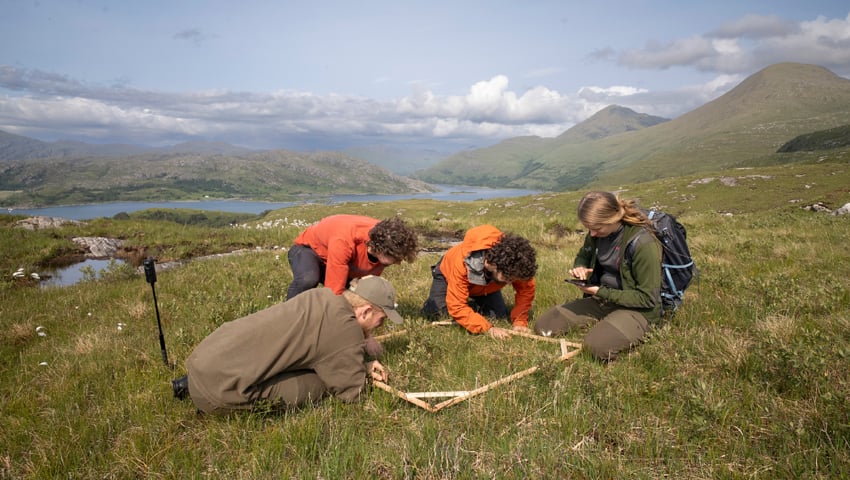An innovative rewilding experiment on a hillside on Scotland’s west coast has yielded promising results, raising hopes for faster, more cost-effective reforestation of the country’s wild and rugged uplands.
At Dubh Allt, a 780-acre landholding near Roshven on the Moidart peninsula, forester and landowner, Ed Townley and partner Becca, have been trialling the use of drones to disperse native tree seeds across degraded moorland that’s been stripped of natural woodland by historic grazing of sheep and wild deer. Partners in the Northwoods Rewilding Network managed by SCOTLAND: The Big Picture, the couple are determined to restore a thriving mosaic of native woodland.
The technique is one of the first of its kind in the UK to target rainforest restoration by dispersing colonising tree species from a drone, and was made possible through financial support from the University of Edinburgh, and technical input from drone specialists, Auto Spray Systems. Three hectares of hillside were seeded by drone in April last year, with a mix of native species including birch, rowan, alder, Scots pine, aspen and willow.
Following a detailed ecological survey carried out by Ed and his fellow forestry alumni, the first results are in. Sampling across the site revealed a seedling germination rate of 2.7 per cent, well above the hoped-for rate of 1 per cent, meaning this woodland creation method is both viable, and cheaper than originally anticipated.
“I see a big future for this approach,” said Townley. “It could go a long way towards taking percentage woodland cover in the UK from the teens up to the 30s or 40s in a relatively short time. The beauty of direct seeding is that it finds a happy medium between the two existing methods of woodland creation – conventional planting and natural regeneration. Where planting is reliable and quick, it’s also expensive, and therefore limited in scope. Where natural regeneration results in healthy, resilient woodland, with only the cost of fencing or deer management to consider, it can take many years, particularly in landscape-scale areas currently lacking in seed source.
“Direct seeding by drone can be done at a fraction of the cost, and replicates natural processes. Woodland will naturally establish only in suitable areas, and reforestation could be seen at landscape scale in a matter of years. Starting with the pioneers creates a resilient woodland, as those hardy species prepare the soil and conditions for the big trees to thrive.’
The team used a standardised quadrat survey technique, randomly sampling square metre plots across the three seeded hectares. Among the emerging greenery, they recorded tiny but healthy seedlings of birch, pine, rowan and others beginning to take hold.
James Nairne, Northwoods Rewilding Network Manager at SCOTLAND: The Big Picture, welcomed the results. He said, “Rewilding is often about working with natural processes, but that doesn’t mean we can’t also embrace technological innovation. What Ed and Becca are doing at Dubh Allt is an example of pioneering spirit in action -trialling new methods to scale up nature recovery in some of the hardest-to-reach landscapes. These early results are hugely encouraging.’
Dubh Allt still retains fragments of ancient birchwoods, oak and Scots pine that cling to rocky outcrops. But regeneration has long been suppressed by grazing pressure. Now, through reductions in grazing pressure, and with seeds in the soil, the land is slowly being transformed.
Image: L to R: Stefan Rijnbeek, Ed Townley, Joe Brennan and Cecilie EngellKjoller surveying Lochaber’s rugged uplands for saplings seeded by drone last year. Allt Dubh, Roshven, Lochaber.
